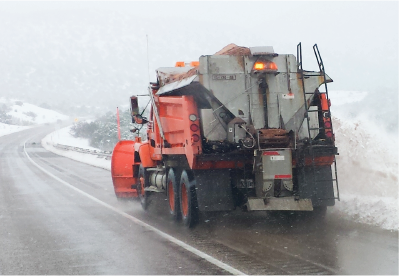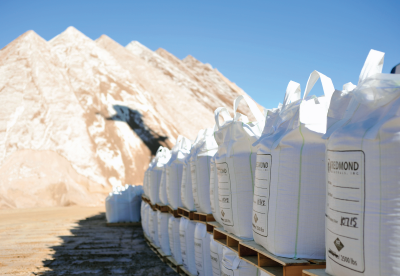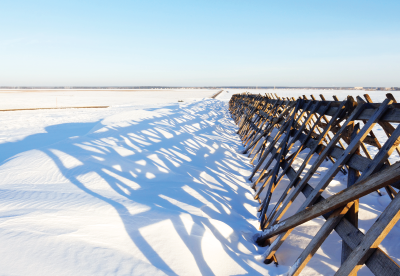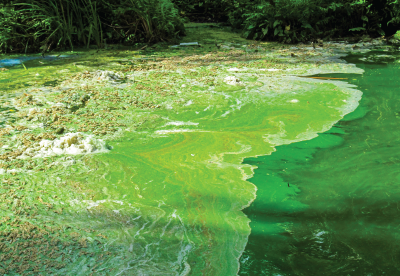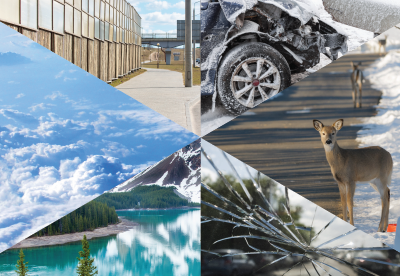Date March 1, 2024 | Brooke Loeffler
Winter Road Treatments and Waterway Health
What Makes A Waterway "Healthy"?
Natural waterways contain a complex network of biological, physical, and chemical systems. Most waterways can keep these systems in balance during natural fluctuations like the changes in seasons. However, large changes can damage this balance beyond the waterway’s ability to recover. Let’s look at a few of the crucial elements that keep a waterway healthy.
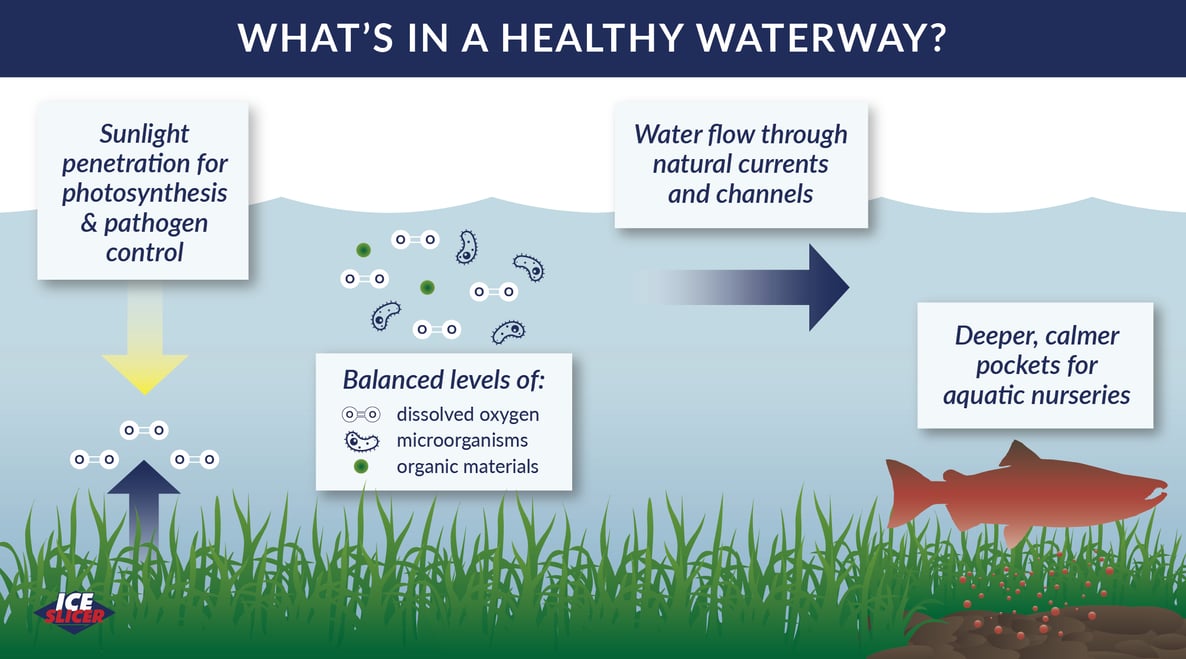
Sunlight Penetration
Aquatic plants need penetrating sunlight in order to photosynthesize. Scientists use a factor called turbidity to measure the clarity of water, and how much light can penetrate to the ecosystem below. Low turbidity means the water is free from excess sediment, and sunlight can easily penetrate to feed plants and keep harmful pathogen colonies at bay. High turbidity levels indicate the water is murky, filled with sediment, and less hospitable to aquatic plants and animals. Excess sediment also harms aquatic life that filter food and oxygen out of the water.
Balanced Dissolved Oxygen, Microorganisms, & Organic Matter
One of the most important components of a healthy waterway is a balance between dissolved oxygen (DO), microorganisms, and organic matter. This balance can be disturbed by influxes of nutrients and organic matter. Microorganisms feast on this extra organic matter and use up the water’s dissolved oxygen in the process.
Aquatic animals like fish need DO in order to breathe, so this nutrient pollution can cause fish kills, toxic algae blooms, and aquatic dead zones. This phenomenon is called an increase in biochemical oxygen demand (BOD).
- Learn more about the connection between road treatments and algae growth
- Learn more about deicer ingredients and biochemical oxygen demand
Water Flow
Flowing currents and channels disperse nutrients and dissolved oxygen to aquatic life and limit the growth of disease causing pathogens. Water flow helps aerate the surface of the water and introduce essential oxygen. If these currents become choked, this nutrient and oxygen delivery system stops. When water becomes stagnant, the health of the waterway is thrown out of balance.
Calm Pockets for Aquatic Nurseries
Most bodies of water have deeper pockets with calmer currents that serve as hatcheries for aquatic animals. While some water flow is still needed, it is important for these areas to be farther removed from predators and turbulence at the surface. The cooler water in these pockets also holds higher levels of dissolved oxygen for growing aquatic animals.
How Do Winter Road Treatments Affect Waterways?
Unfortunately, there is no immaculate way to maintain roads during the winter. Every substance used on a road surface will enter the environment to some extent. However, some treatments are definitely better than others at balancing public safety and environmental safety. Let's look at the most common winter road treatment categories through the lens of waterway health.
Aggregates/Abrasives
Some areas use non-soluble aggregates such as sand, gravel, and cinders in an attempt to increase winter road traction. Because these materials are not water soluble, they do not dissolve or dilute as snow melts, and they continue to build up over the course of a winter season. The Environmental Protection Agency (EPA) states that:
“unwanted sediments choke many streams and waterways, representing one of the largest pollution problems in North America.”

Winter road abrasives/aggregates damage waterways in a number of ways:
- Decreases water flow velocity: reducing the flow of nutrients and dissolved oxygen that aquatic life needs in order to survive.
- Increases bed load (bottom of waterway) deposits: artificially shallowing waterways and damaging natural aquatic nurseries. Shallow waterways have a higher average temperature which leaves them more susceptible to toxic algae blooms, and lower dissolved oxygen levels
- Increases turbidity: more sediment suspended in the water prevents light from penetrating to aquatic plants and clogs fish gills
- Artificially changes the shape and channel of waterways: thus altering the habitat of aquatic life even far away from the roadside
- Binds to chemical contaminants: “chemical contamination complicates the picture even more because oils, nutrients, pesticides, herbicides, and other toxic substances bind to dust and sediment and go along for the ride to pollute our streams and waterways” (see EPA report listed above)
- Learn more about the cost of cleaning up excess winter road abrasives.
Agricultural Byproducts
Some areas choose to use deicers containing agricultural byproducts such as beet juice, beet pulp, or corn/ethanol. However the initial appeal of reusing these byproducts is misleading. When these treatments runoff into local waterways, the nutrients provide a feast for water-born microorganisms. This eutrophication or “nutrient pollution” is the same ecological disaster caused by excess fertilizer runoff. As they feast, the microorganisms use up the dissolved oxygen in the water, killing off aquatic animals and allowing toxic algae to flourish. The Michigan Department of Environmental Quality has found that deicers containing some agricultural byproducts can be more harmful for water health than raw sewage:
"Some ABP deicers have the potential to greatly impact DO concentrations in surface waters, as they may contain many times the amount of BOD found in strong wastes like raw sewage."
Acetates
Acetates, such as calcium magnesium acetate, have organic molecules that can be used by microorganisms as nutrients. According to the United States Geological Survey (USGS):
“the adverse environmental effects of CMA used as an anti-icing material are mainly related to the acetate ion, C2H3O2. Acetate can increase the biochemical oxygen demand (BOD) of streams, causing the depletion of dissolved oxygen.”
Chloride Salts
Chlorides are the most common type of deicing compound used today. They are used in both solid granular and liquid form (as an anti-icing treatment before storms). The chloride salts used in deicing include:
- Magnesium Chloride
- Calcium Chloride
- Sodium Chloride
- Potassium Chloride
Of all the road treatments listed above, chloride salts have the least impact on waterway BOD levels. According to a government deicing impact study conducted by the Idaho Transportation Department:
“chloride deicers, such as sodium chloride (e.g., rock salt and Ice Slicer)...have very low biochemical oxygen demand levels.”
If excessive amounts of saturated chlorides enter waterways, they can create areas of higher salinity than would be normally present. Using higher performing products with (lower application rates) and calibrating equipment, is the best way to make sure there aren’t too many chlorides being introduced into the environment.
How to Protect Drivers and Our Waterways
What's good for the salmon, can also be good for our roads. Here are some deicing best practices to help balance road safety and waterway protection:
- When selecting a road treatment, look at the entire environmental picture (air, soil/plants, animals, waterways)
- Train personnel on appropriate application rates for products used
- Pay close attention to weather alerts and local microclimates to get ahead of heavy snow accumulation
- Apply appropriate light pretreatments to reduce ice bonding to paved surfaces
- Calibrate equipment to ensure consistent application rates and reduce environmental impact
- Make purchase decisions based on value...not cost so you can enjoy lower application rates (looking at cost per lane mile or cost per storm will help you select products that perform better with less product)
Ice Slicer’s® Environmental Commitment
Ice Slicer® is dedicated to helping protect lives as well as our natural environment. We are proud of our all natural road treatment and how well it performs out in the field.
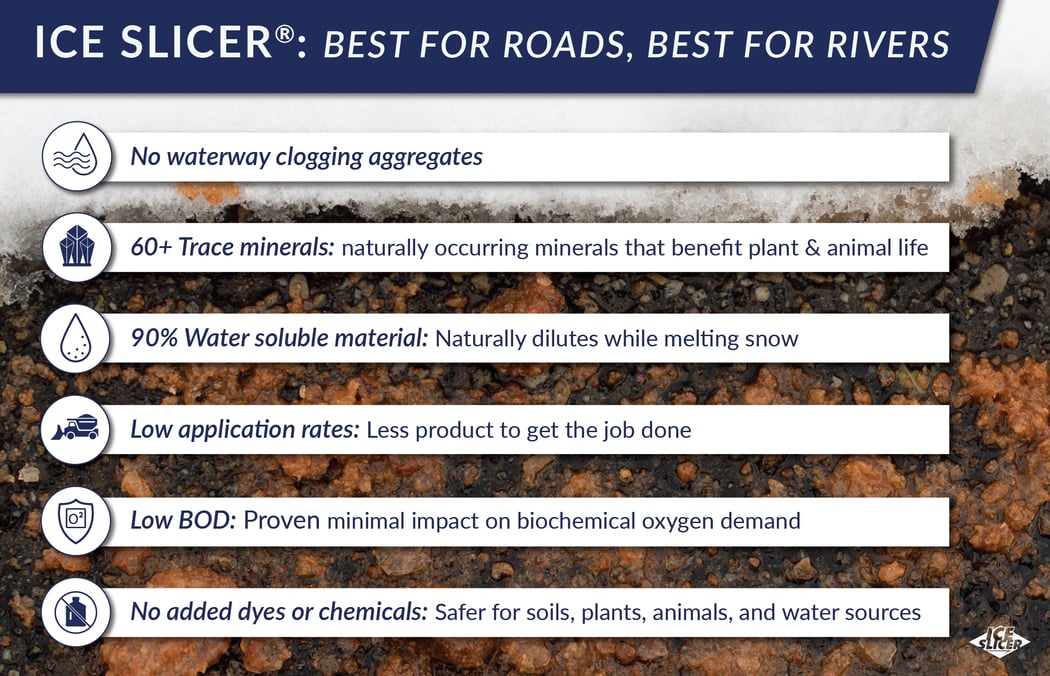
Harvested from a Jurassic era mineral deposit in central Utah, Ice Slicer® contains a unique blend of complex chlorides and over 60 naturally occurring trace minerals that buffer the effects of chlorides on the environment. Ice Slicer® really is Mother Nature’s perfect recipe for melting ice and snow. When used in the recommended application rates, Ice Slicer® clears roads faster, helps roadside ecology, and protects your budget with a lower cost per lane mile than other deicing treatments. Give us a call today to try it for yourself!
© 2024 Redmond Minerals Inc.

